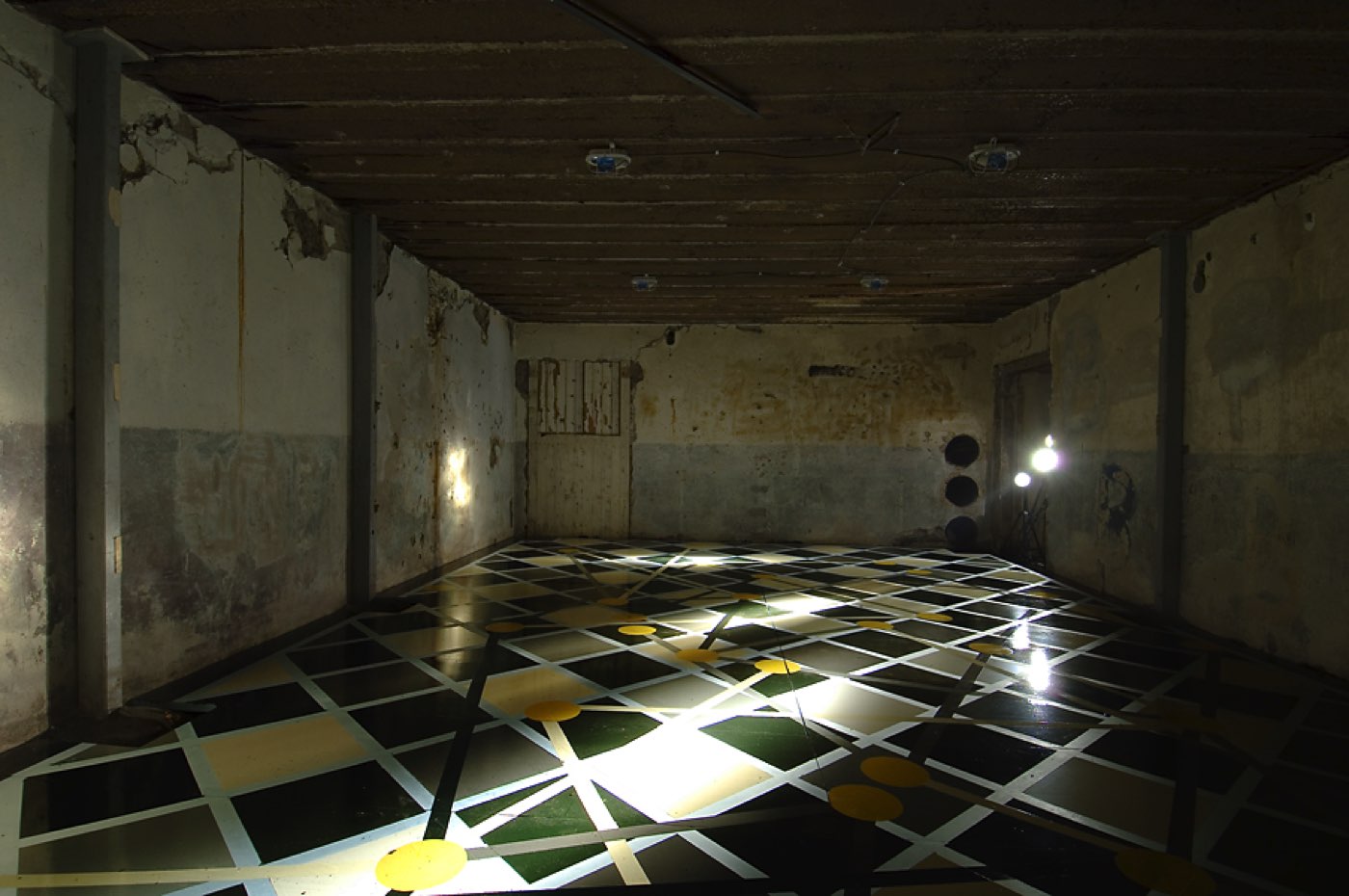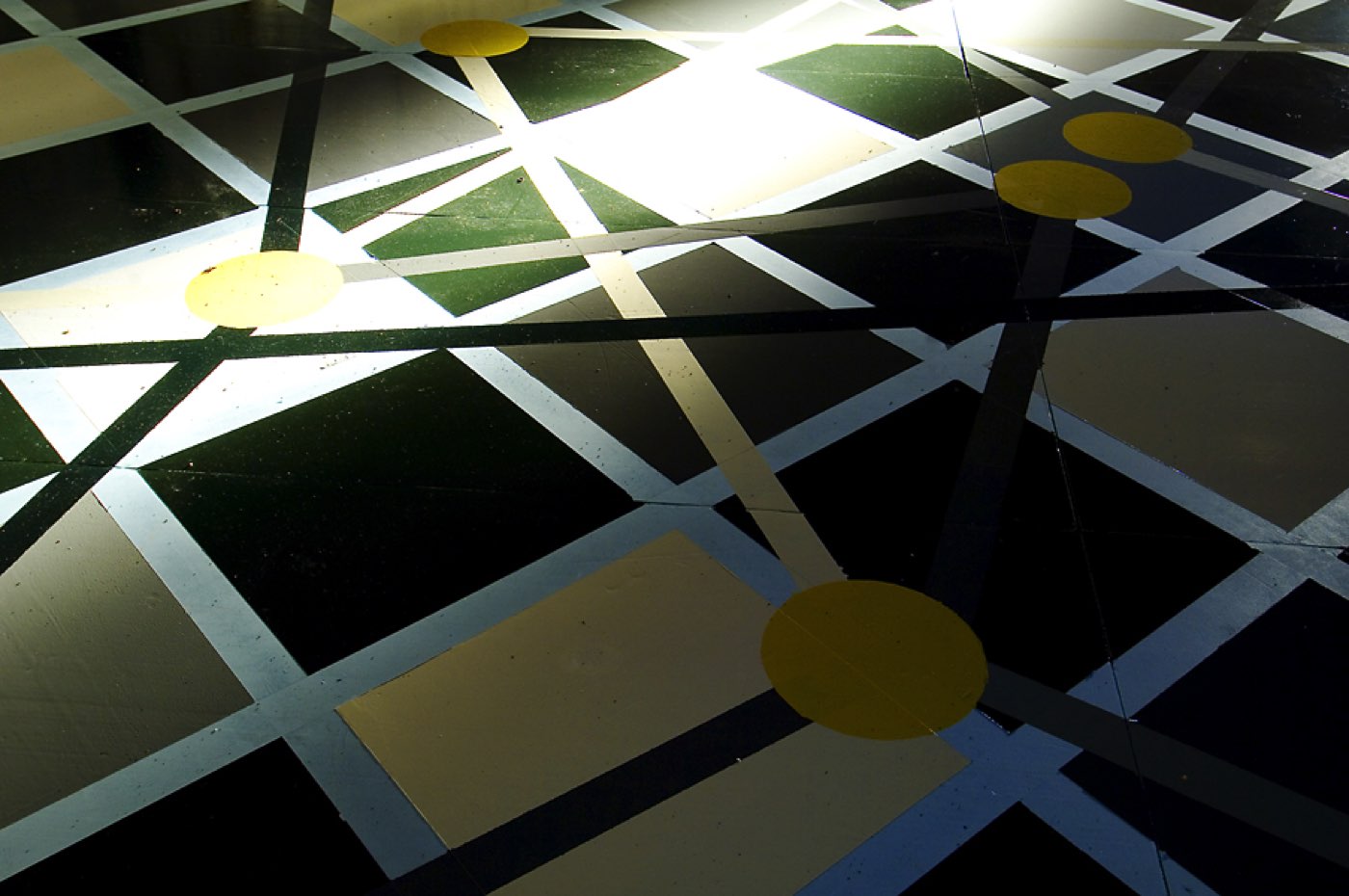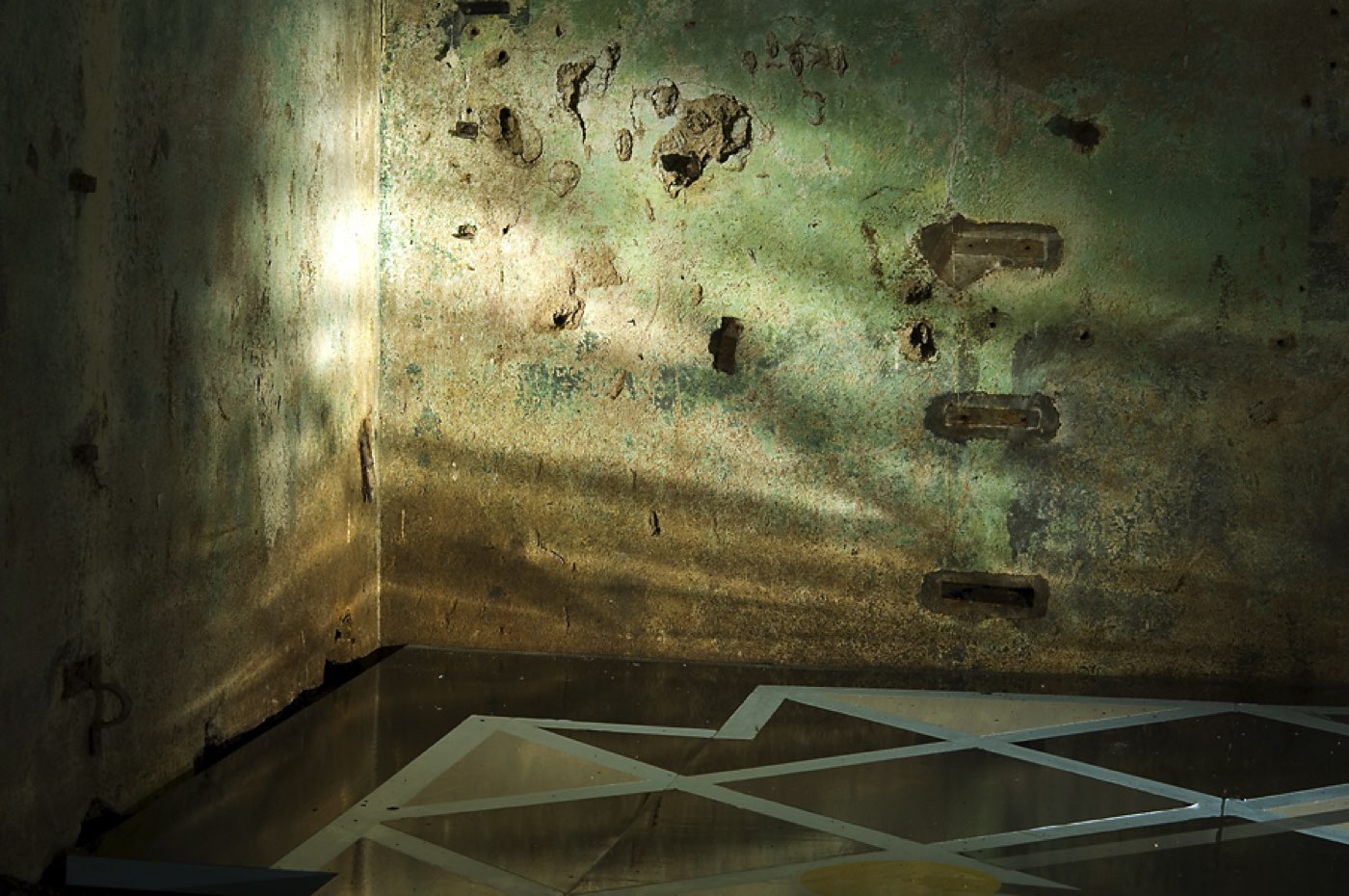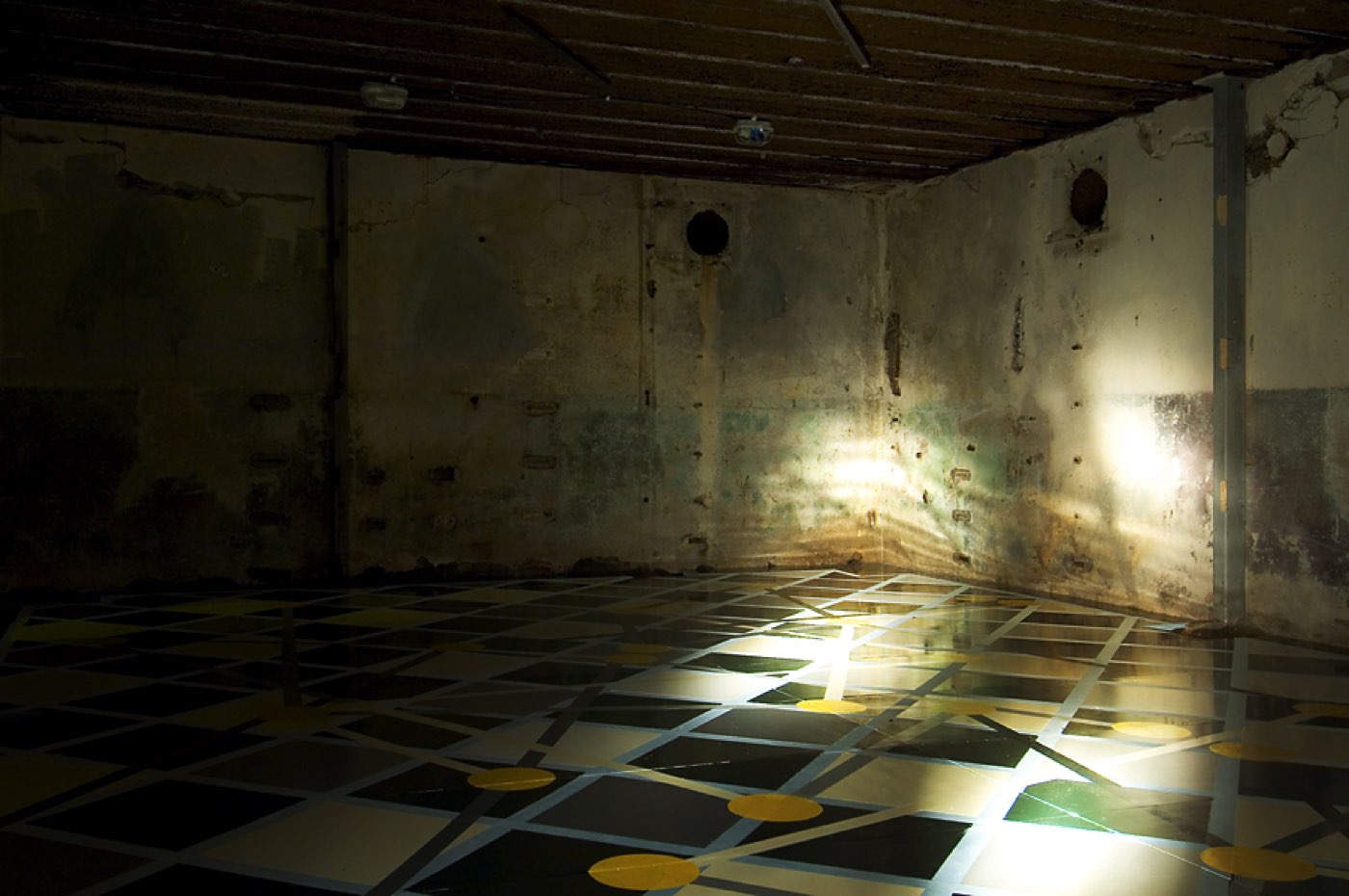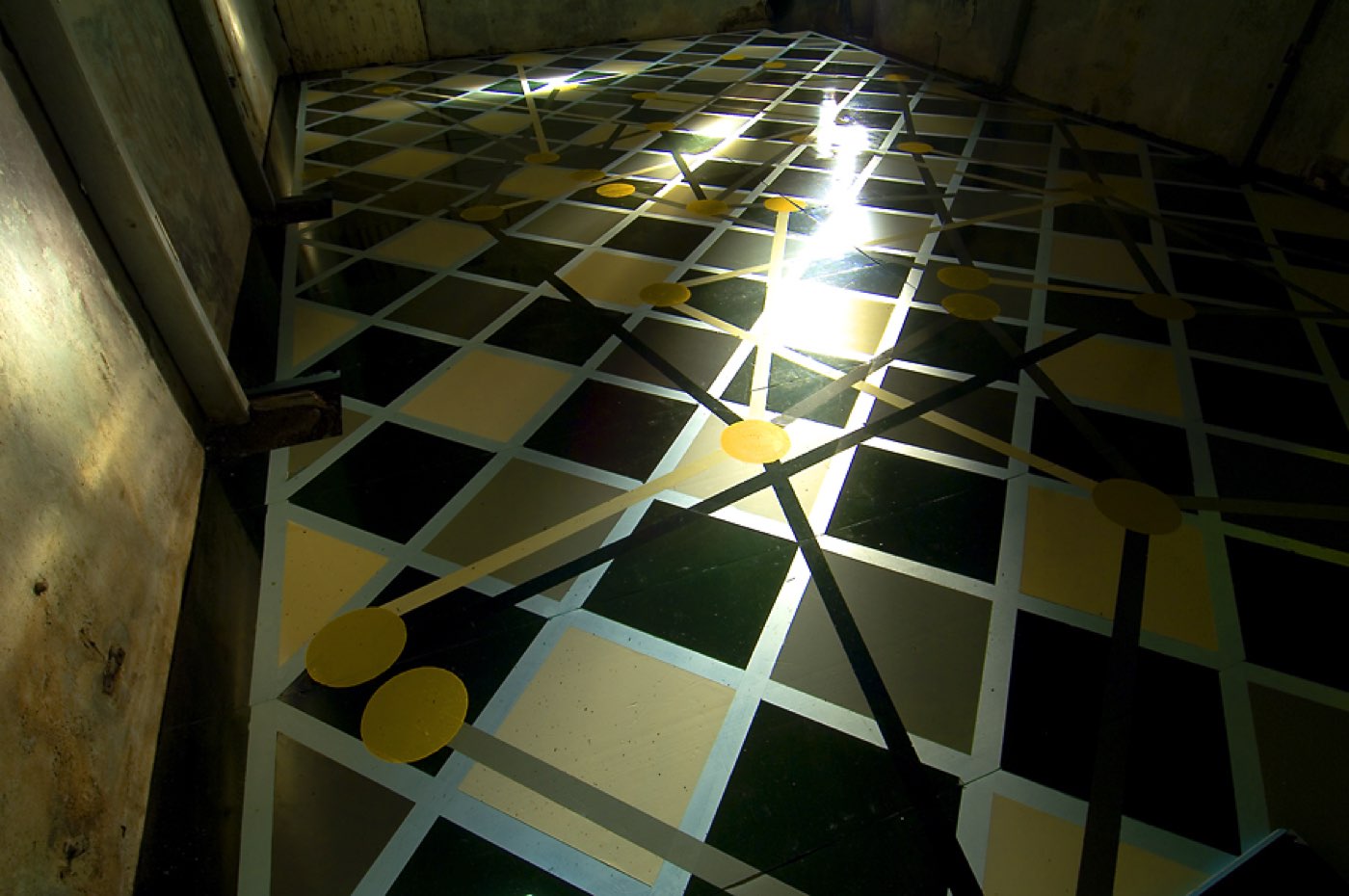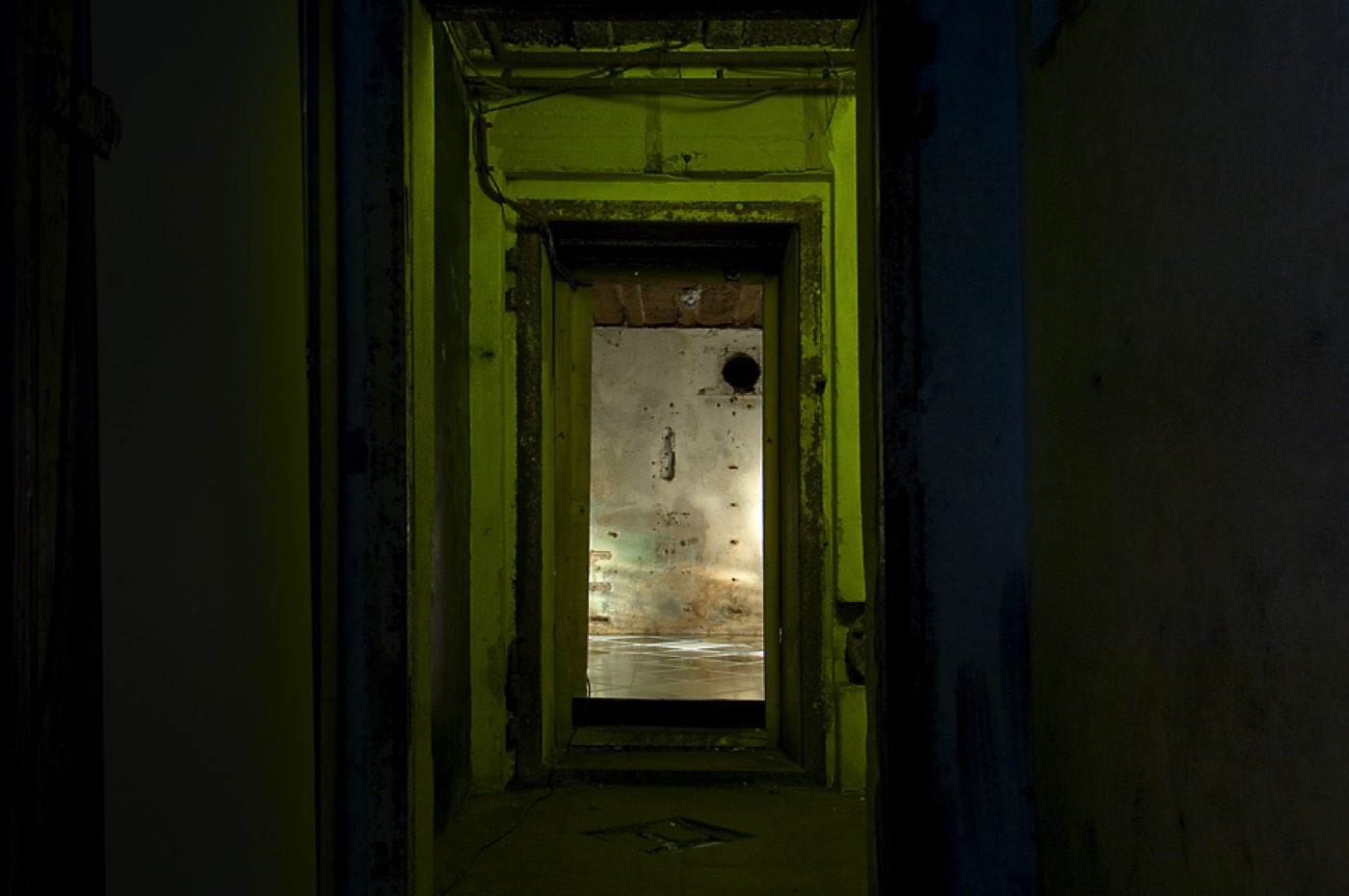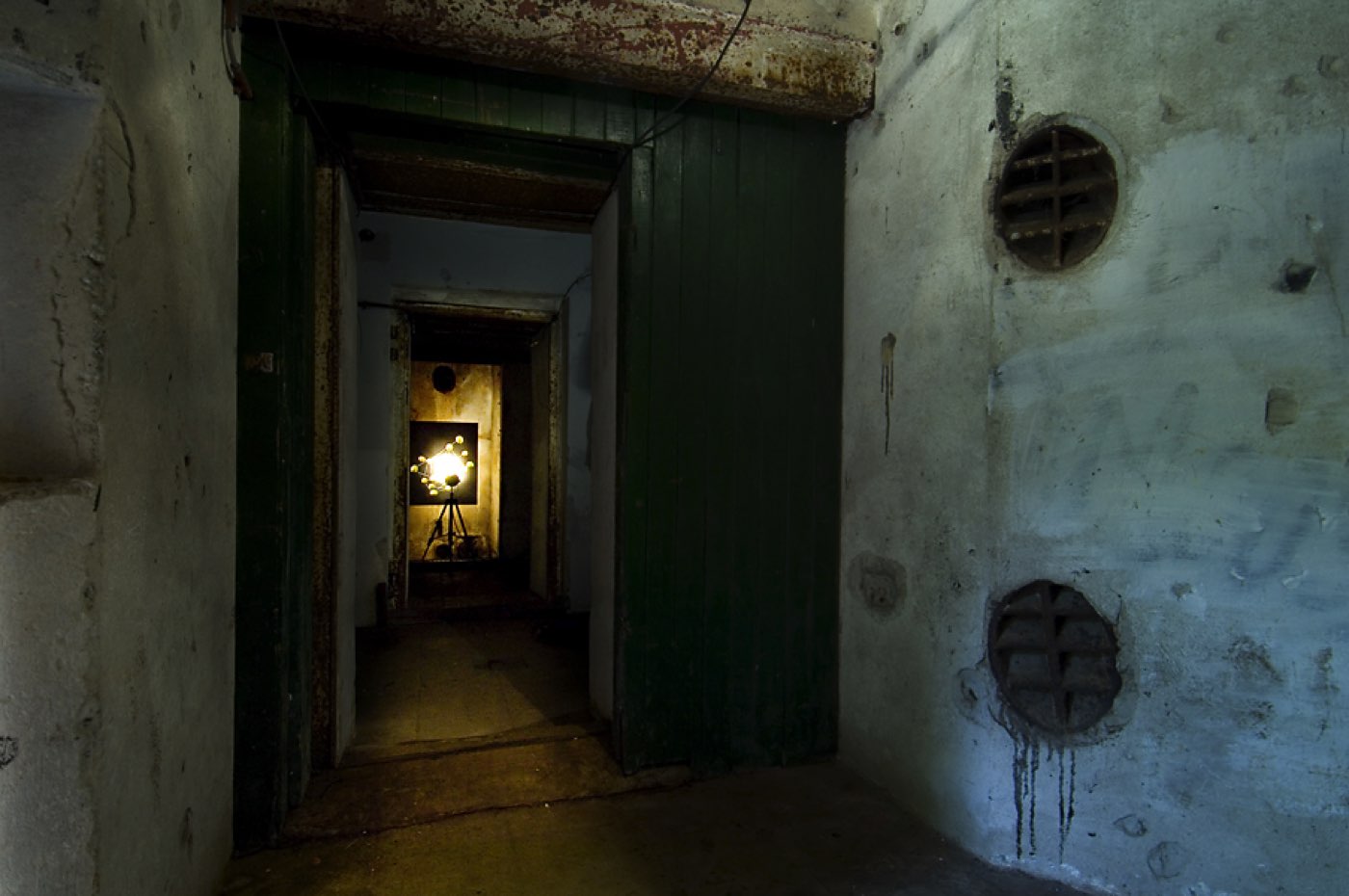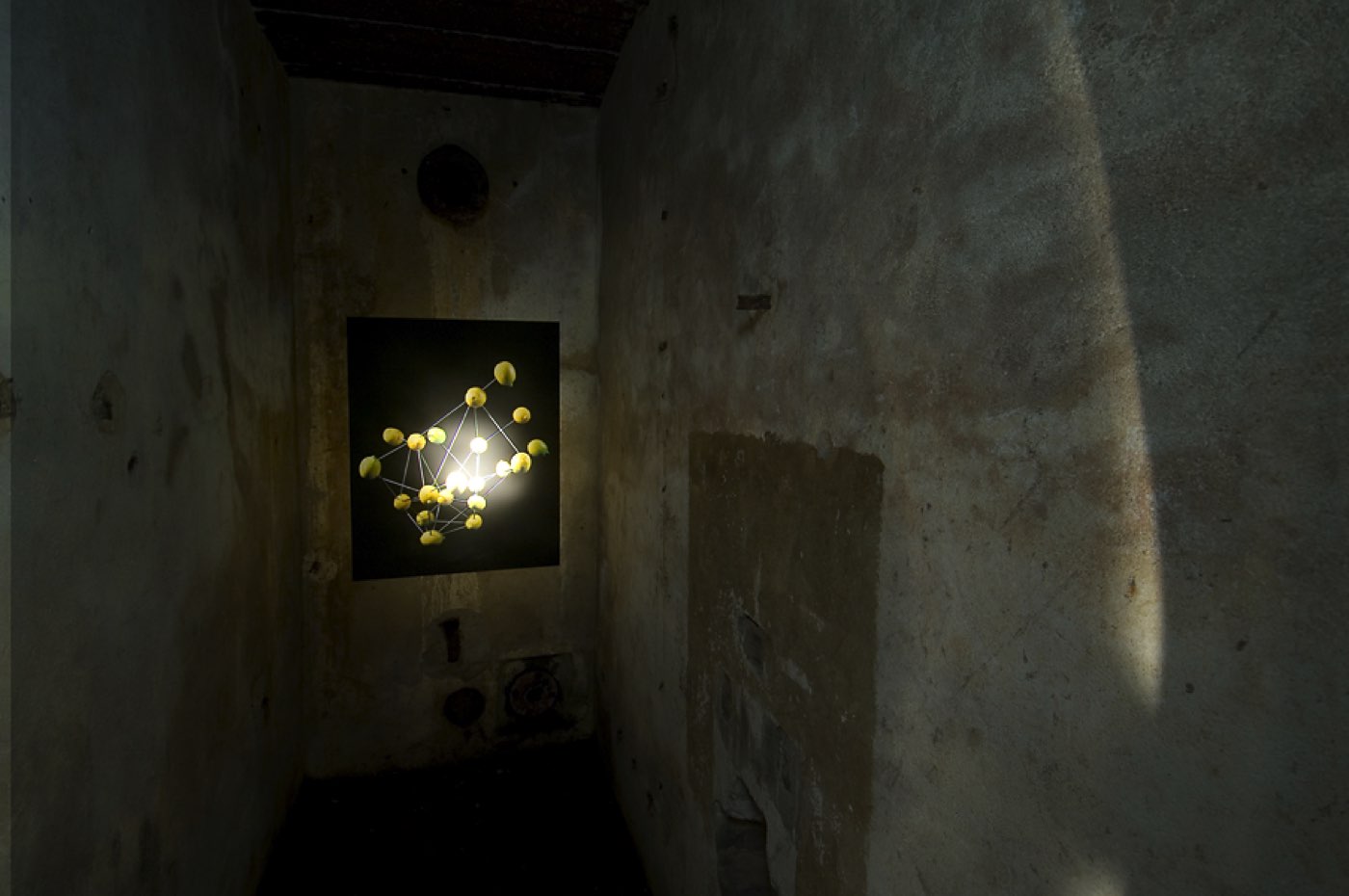Thuistezien 255 — 04.05.2021
Lotte Geeven
Bunker#2 — Pattern of power
Bunker#2 — Pattern of power
On a trip to Bucharest in Romania, the Dutch artist Lotte Geeven visited the Palace of the Parliament. The building is regarded as the heaviest and the most expensive building in the world and with its 365.000 m2 floor area, it is a solid demonstration of grandness. That is in spite of the fact that only 30% of the building is in use while the rest remains unfinished. Behind all of the alluring Neo-classicist architectural details of ornaments made with expensive materials, a thick and heavy mass of concrete carcass is holding the building together. It might be veiled by its extravagant outer shelf but it is, nonetheless, the true nature of the worlds’ heaviest building.
In Westbroekpark in The Hague, a bunker is situated, now functioning as a relic from the Second World War meanwhile standing in stern contrast to the Dutch park landscape. Its architectural features convey the exact opposite from the Palace of the Parliament by not hiding any of its grimness and brutality. The bunker was used as a location for an exhibition under the name ‘Bunker’ by West during the summer of 2010 where contemporary national and international artists were invited to exhibit their works while reflecting on the bunkers particular architecture. The bunker as an exhibition space is peculiar in the sense that its in-hostility deviates from any element typically incorporated in a classic white-cube exhibition space which made many of the invited artists to comment directly on the architecture in their works, and Geeven’s installation was not an exception.
For her installation in the Westbroekpark bunker, Geeven took inspiration from her visit at the Palace of the Parliament. In particular, she was fascinated by the marble floors and its ornamental patterns that veiled its concrete structure. Her installation ‘Pattern of Power' reflects on the visual but also the historical impact of the Romanian palace, whose totalitarian grandness should reflect the socialist regime of Romania. For Pattern of Power, Geeven has constructed a floor inside one of the bunker’s rooms. The pattern of the floor is based on the photo ‘All the many hours before dawn’ which resembles a digital depiction of a molecule assemblage. The picture, however, becomes abstracted as it is enlarged into the floor piece and its aesthetic value becomes the most apparent. With Pattern of Power, Geeven is, arguably, doing the same procedure as the architects did with the Palace of the Parliament; covering the building’s natural structure. However, instead of acting as an attempt to veil the rough, raw concrete which carries the heavy history of a World War, the floor’s elegance rather gives prominence to the bunker’s original architecture. Oddly, Geeven’s constructed floor does not become a distinct deviance in the architecture but rather subtly but beautifully engages in a conversation between the elements. It is not placed there to overrule history but to add a new dimension.
Text: Rosa Zangenberg

 previous
previous next
next 